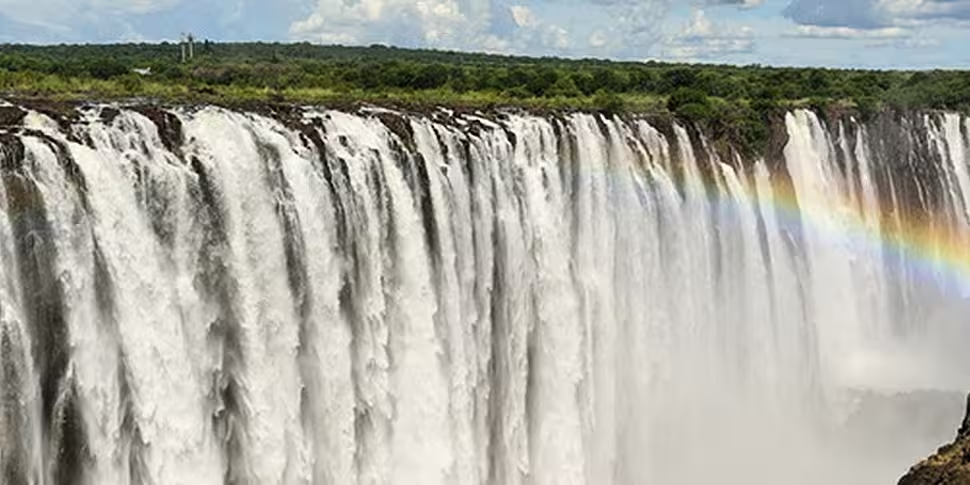Zambia has only been on the tourist trail for a decade, despite it being an ideal safari destination, with 20 national parks. It has shed its dire political history and has learnt from the mistakes of neighbouring Namibia and Tanzania, now focusing on environmentally and culturally sustainable tourism.
Though landlocked, three great rivers, Zambezi, Luangwa and Kafue, flow through the country, defining geography and the rhythms of life. Protected areas cover about one-third of Zambia’s total landmass, ensuring ample space for spotting lion, elephant, Cape buffalo, leopard and rhinoceros. Luangwa National Park in Zambia, might not be as famous as other parks, but it has one of the best ranges of wildlife on earth, including leopards.
It is by far the best place for walking safaris.
What to do:
Luangwa Park – Different from parks in not the proscenium arch variety, where only upon stepping through the gates of the national park did one see wildlife. Here there are no neat borders and the animals were everywhere. A remarkable sight on the drive from Mfuwe airport are Zambia’s high-nelly bikes, fully-laden with maize and palm oil, abandoned on the track where their owners had encountered a hippo or elephant and fled. Not like Kenya or Tanzania where seven competing jeeps all congregate around the same injured lioness, crowds of photographers jostling each other around a watering hole. Giraffe, elephants, buffalo, impala, bush bucks and warthogs wander free.

A leopard spotted in Luangwa Park [Flickr/Mike07922]
Suddenly the screeching of baboons alerts you to danger and you hear the shriek of a terrified impala. The floodlight revealed two lions bent over the stricken animal, its jugular still throbbing, spewing out blood. The lions too caught up in the kill to care as they tore the animal to pieces. Eerie to be so near and yet ignored completely. Even a spider or an ant would have reacted more to our presence.
Microlight Trips –An unusual excursion, but offering a birds-eye view, this sees two go-cart seats bolted to an aluminium witches broom with a lawnmower engine. Strapping on a helmet and headset, suddenly you are airborne and below the chaotically coiling river with a herd of hippos wallowing, arranged head to tail in a weird chain-mail pattern. Flying over a baobab tree on which fish-eagle nest, sweep gracefully through a family of elephants who show no sign of concern. Wonderful to see wildlife without causing anxiety – rather than photos of retreating frightened animals. Just a large loud bird passing overhead. Best thing is you get to dive bomb crocodiles.
Walking Safaris – A less-intrusive, more intimate, way of being in the bush. You mightn’t get to see as much wildlife as you would from a jeep, but you learn about their tracks, their faeces and the plants and insects of the bush.
“My job is to keep you alive,” Isaac, our guide, said. “I have been guiding 35 years and never lost a man. But you must listen and obey me, okay?”
He pointed to the next man in line – a gangly scout dressed in military fatigues and carrying a .375 Brno rifle. “This is Batwell. He is from the State National Park. His job is to protect the animals. If we are attacked, you must ignore him and follow me. He will be fine – it’s what he’s trained for.” The third man, dressed in a beige jumpsuit was Justin. His job was to carry the tea and cake and make us a fire when we rested. He lined us up in the order we were to walk: Batwell first, then Isaac, then me followed by Justin.
We set off through the bush – an area of perfect wilderness; lost lagoons, ebony forests, open grassland and dry, sandy riverbeds. Hiking in blissful isolation through a natural paradise teeming with animals. At first you’re on edge, fearful that every patch of long grass could conceal a prowling lion, or that a leopard might spring from every tree. You see on night-drive how numerous the carnivorous predators were and how vicious they could be. Now on the food chain, I was slower, fatter, and probably tastier than every other animal out there.
But large grazers – the hippos, buffalo and elephants – are most likely to charge if we startle them. It was up to us to make sure we never did. You listen out for the oxpickers, the birds that sit on their backs and warn of approaching predators. If we heard the call we had to stand stock-still until we worked out where exactly the animal was, and then retreat, making as long a loop around it as was necessary.

A hippo and Oxpicker companions on the trail [Flickr/Achim]
You set off at 7am and work through the bush for four hours until arriving at either one of two bush camps that appears by magic out of the wilderness. A team of cooks and porters permanently stationed there would have prepared lunch for us – all the ingredients hiked in by a team of porters (who had no armed guard to protect them!). After lunch, a siesta, then head out again mid-afternoon until dusk. Different animals to be seen at different times – a glimpse of a giraffe’s neck between two trunks, a Scott’s owl in a tamarind tree, a bushbuck leaping from behind an acacia, an elephant flapping its ears in defiance.
Victoria Falls –Recognised as one of the seven natural wonders of the world, and declared a World Heritage Site by UNESCO, at over one mile wide, this is the most expansive curtain of water in the world – and drops more than 328 feet into the sheer Zambezi Gorge.
Livingstone Museum – In the town that bears his name is a quaint collection with some real treasures, including dozens of Livingstone's handwritten letters carefully preserved in sliding glass drawers. His medicine box, penknife and umbrella, and some wood carved from the tree beneath which Welsh-born New York Herald journalist Henry Morton Stanley asked him, "Dr Livingstone, I presume?"
Flights – Dub – Lusaka with Emirates cost €750, and with Ethiopian airlines €721.









